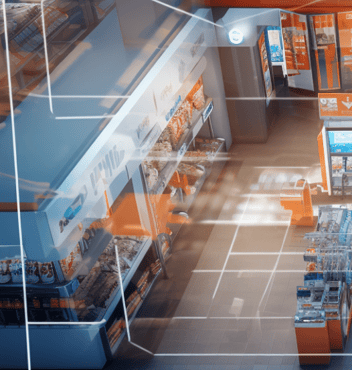In the fast-paced world of consumer packaged goods (CPG) and retail marketing, traditional scorecards fall flat when it comes to providing the big picture. While informative, I’d argue they are far from truly actionable. Of course, market share, unit and dollar volume, shelf facings and units of incremental floor space are crucial, but they lack the context needed to truly understand performance. The typical quarterly earnings report is often met with either thunderous applause, or deafening alarm bells. Either way, the category, shopper, and marketing teams are all then on their way to regroup and ask “now what”?
And that is where the standard performance scorecard falls devastatingly flat. Because what is missing, for the big wins and the colossal losses, is any kind of contextual storytelling to offer a guiding light on where to go from here. Too often, marketers are left to paint the picture themselves, with glaring blindspots meeting them at every turn. In response, we fall back on faulty, and certainly not fact-based, theories and opinions...because that is all we have to work with.
This is where, what we propose should be page two of the scorecard, comes in. A scorecard that delves into the true ‘cause and effect’ moments sheds light on performance with concrete, fact-based findings. Unraveling consumer decisions and reactions to contextualize your brand’s in-store performance only happens when you stop, and actually take a walk in your shoppers’ shoes.
So, what kind of metrics belong on this second scorecard? The ones that tell you the story from start-to-finish and get down to the true ‘cause-and-effect’ moments that lead up to this very moment.
In our new Shopper Insights and Behavioral Science Guidebook, we dive into the methodologies and metrics that can sharpen even the savviest retail marketing strategy with evidence and true root cause analysis. Some of our client’s favorites include:
Shoppability Score
A detailed path to purchase analysis can provide marketers with visibility into the shopping experience, and the level of ease with which shoppers are able to navigate and shop the category. Look to a unique blend of behavioral metrics that reflect the shopper’s experience, complete with all the triggers and barriers faced along the way. What’s more, shoppability scoring is an essential tool for category teams to dissect the way that shoppers expect to shop their category, and can provide essential insights into wayfinding best practices, aisle flow, and navigation cues.
Engagement Rate
Fact: the highest traffic area of the store is not necessarily always the best placement for a secondary display. Look closer at the percent of shoppers who actually stopped in their tracks, who snapped out of autopilot and registered, and engaged with, your campaign. If shoppers are walking past your display without so much as a cognitive glance at it, that tells a story that can, and likely should, be addressed with urgency.
What Else?
For a full list of metrics to consider, along with a crash course of behavioral science applied in retail settings, download our free Shopper Insights and Behavioral Science Guidebook.
If you’re looking to elevate your understanding of shoppability, take a look at our Shoppability Guide, which offers tips and tricks for measuring shoppability, and then translating into an actionable game plan for your brand/category.
Curious what empirical metrics could do to shape your category perspective and contextualize your standard performance scorecarding? We’re always ready to ideate with you.





